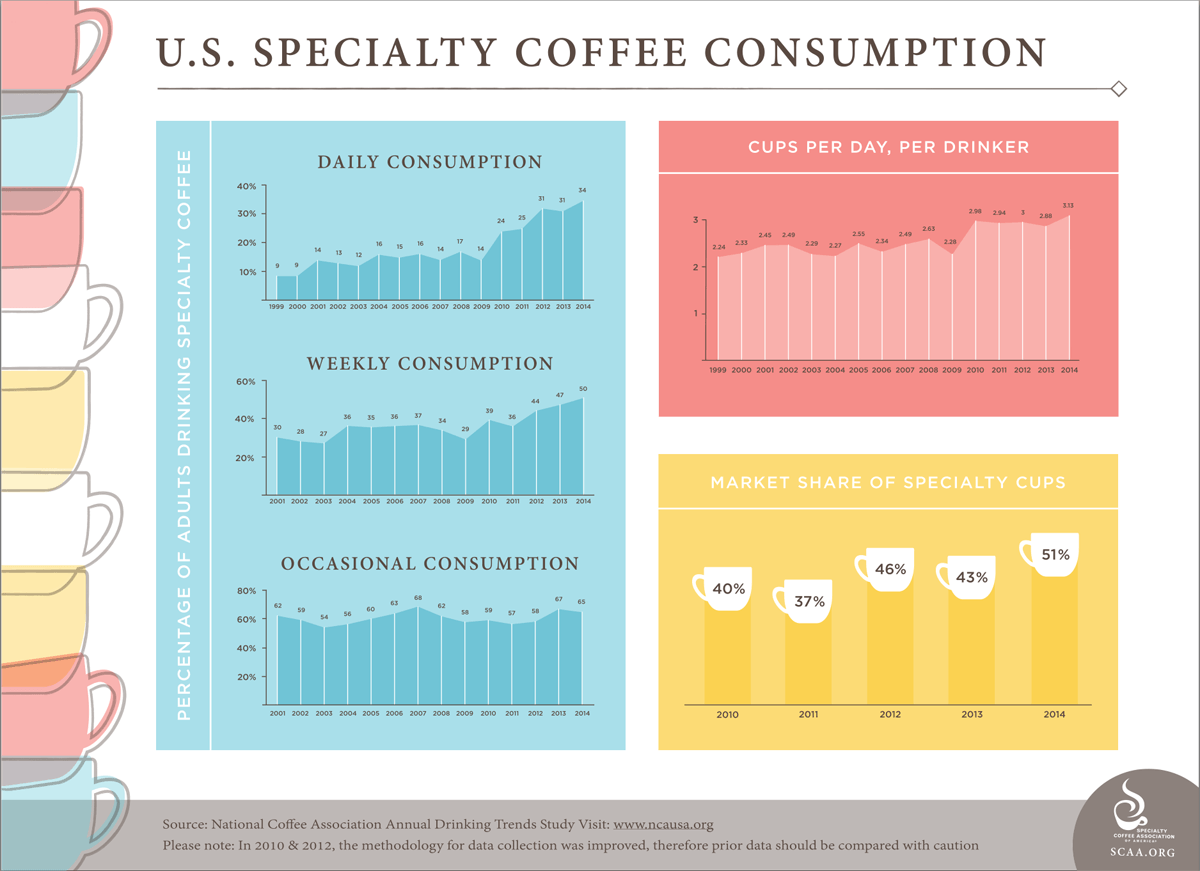The Differences Between 1st, 2nd, and 3rd Wave Coffee

Our world has seen coffee trends come and go for centuries, but the last few decades have really been a period of growth and evolution for the global coffee industry. For this blog, we’re going to focus on three trends, movements, or—more commonly—’waves’ of coffee experiences that have evolved in the last few years. You’ve no doubt encountered all three coffee waves, but you may not have realized it. These coffee waves have to do with bean quality, sourcing practices, and a handful of other elements. By learning about them, you can clearly see how coffee is evolving and where it’s headed. You’ll also gain a new way to communicate about a coffee roaster or cafe’s quality. Let’s dive in!
The First Wave of Coffee
The first wave of coffee is seen as the lowest quality and is known as commodity coffee. Think Folgers, Maxwell House, Green Mountain Coffee, and other brands that don’t have a strong focus on quality or sourcing transparency. First wave coffee doesn’t really try to convince you that the grounds are special in any way. In fact, for decades most people in the United States didn’t even know that coffee beans come from a real-life plant! Why? Because first wave coffee feels like it came from a factory, not a farm. There’s no (or rarely) any mention of the origin country or farm, there’s no information on how the coffee was processed, and there’s almost always a major focus on convenience. Common Signs of First Wave Coffee:- Artificially or “naturally” flavored beans
- Language of “premium” or “gourmet”
- Primarily pre-ground offerings
- Super dark, bitter coffee
- The supermarket coffee aisle
The Second Wave of Coffee
We generally attribute the rise of second wave coffee to brands like Starbucks and Caribou Coffee that revolutionized cafe culture in the United States. These roasters and cafes brought coffee to life in a new way in the late 1900’s by introducing coffee lovers to a wider variety of coffee experiences. They started publishing origin countries and began exploring higher-quality coffee, but they still didn’t really direct the customer to the coffee itself—but the experience. For example, Starbucks pioneered what was once considered “specialty coffee drinks” in the US by mixing espresso shots with sweet, flavorful syrups and other ingredients. The emphasis still wasn’t really on the coffee, but the creative drink, the mood lighting, and friendly baristas. This certainly added pizzazz and generated interest in coffee, but it rarely departed from the super-dark coffee roasting style of the first wave that left coffee bitter, uninteresting, and uniform. Common Signs of Second Wave Coffee:- Heavy focus on flavored drinks
- Fairly dark, bitter coffee
- The supermarket coffee aisle
- Slight recognition of coffee origin country
- Baristas who are passionate about the cafe, but not the beans themselves
The Third Wave of Coffee
Third wave coffee evolved from a niche community in the 1980’s that was highly focused on the coffee beans. This small group of roasters and cafes was experimenting with lighter roast levels and bringing new, exotic flavors out of well-grown coffees.In 1982, the Specialty Coffee Association of America was founded, giving a platform to this new style of roasting and brewing. At the same time, this wave was starting to become prevalent in other areas of the world like Australia, Canada, and Scandinavia. This sub-industry grew and grew over the next couple decades. The term “third wave of coffee” was coined in 1999 and became a rapidly growing trend. As more and more consumers realized that there was more to coffee than bitterness and ashy flavors, a coffee renaissance emerged. Fast forward to modern day. The phrase “third wave” has sort of fallen out of favor. This segment of the coffee industry is now more commonly referred to as “specialty coffee” and is the largest coffee sub-industry in the US. We have our own major industry trade shows, worldwide competitions, and values. We love coffee for the beans themselves, not just the cafe experience. This fascination is manifested by our addiction to flavorful light and medium roasts, our love for transparency when it comes to a bean’s origin farm, and our love of coffee that’s made by-the-cup. Common Signs of Third Wave Coffee:- Specific flavor notes (eg. honey sweetness, rose aromatics, and orange acidity)
- Lighter roast profiles
- Latte art
- Single origin (single farm, estate) beans
- High degree of origin transparency
- Manual brewing methods like pour over cones and french presses
- Freshness transparency by publishing specific roast dates




